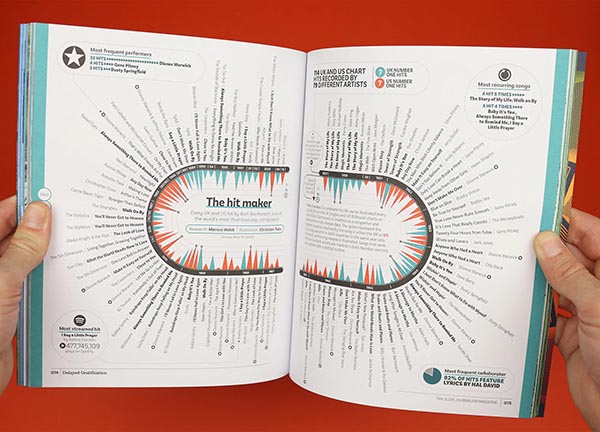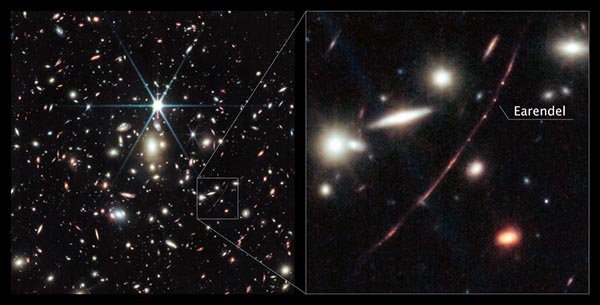Having Issues
Some of us are big fans of print magazines, and for lovers of obscure, independent magazines that still exist in print, Print magazine (online) has a list of their best independent magazines that are in print and have lasted beyond their first few issues—a claim not too many publications can claim.
So this list is dedicated to the magazines that have been with us for more than just a couple of years, honing their craft over many issues and establishing themselves as some of the best examples of independent publishing in the world.
Dirty Furniture sounds intriguing.
Launched on Kickstarter in September 2014, Dirty Furniture is interested in what happens, ‘When design leaves the showroom’, exploring the messy, unintended stuff that’s thrown up when people start actually using designed objects. Originally conceived as a biannual publication that would run for three years across six issues, editors Anna Bates and Elizabeth Glickfeld have stuck to the original concept but extended it across a much longer timeframe, with the series finally due to come to a conclusion at the end of this year.
Delayed Gratification takes an opposite tack to what you normally find in journalism, as they proudly claim to be the last to break news.
Delayed Gratification looks back on the world from a careful remove, revisiting events after the dust has settled to present its uniquely considered perspective.
They’re also big on infographics (and big infographics):

You can also subscribe to a surprise magazine club and they’ll deliver a different publication to your mailbox every month.
Sliding Away
It’s hard for many of us to remember a time before PowerPoint, but the MIT Technology Review has a fond look back at what corporate presentations were like before the ubiquitous PowerPoint, portable computers, and projectors.
In the late ’40s, multimedia was a novelty. But by the early 1960s, nearly all companies with national advertising budgets were using multimedia gear—16-millimeter projectors, slide projectors, filmstrip projectors, and overheads—in their sales training and promotions, for public relations, and as part of their internal communications. Many employed in-house A/V directors, who were as much showmen as technicians. Because although presentations have a reputation for being tedious, when they’re done right, they’re theater. The business world knows it. Ever since the days of the Vitarama, companies have leveraged the dramatic power of images to sell their ideas to the world.
And if you were around in the 1970s or earlier (or saw the season one finale of Mad Men), you may remember the distinctive clicking noise of the Kodak slide carousel.
Before PowerPoint, and long before digital projectors, 35-millimeter film slides were king. Bigger, clearer, and less expensive to produce than 16-millimeter film, and more colorful and higher-resolution than video, slides were the only medium for the kinds of high-impact presentations given by CEOs and top brass at annual meetings for stockholders, employees, and salespeople. Known in the business as “multi-image” shows, these presentations required a small army of producers, photographers, and live production staff to pull off.
None of that “create the slide deck on the plane on the way to event at which you are presenting”). But, alas, once the digital age arrived, it was the end of an era.
The last slide projector ever made rolled off the assembly line in 2004. The inside of its casing was signed by factory workers and Kodak brass before the unit was handed over to the Smithsonian. Toasts and speeches were made, but by then they were eulogies, because PowerPoint had already eaten the world.
Phoning It In
Some of you may remember phone booths and pay phones, long a fixture of public spaces in the days before mobile phones. As it turns out, they are kind of making a comeback—but for a different purpose: a dial-a-poem service. Via Boing Boing, Telepoem Booth installations are popping up, in which you enter the booth, dial a phone number, and listen to a poem.
If you’re nowhere near one of the Telepoem Booths, but have access to a rotary or push-button phone, you can use these directories to access over a thousand poems written and recited by regional, national, and international poets. Some of the directories even offer full texts of the poems on offer. And if you don’t have access to a booth, nor to rotary or push-button phones, a handful of poems are available to listen to, on the internet—click here to access those.
They are mostly located in the Southwest—and primarily New Mexico—as the concept was developed by Santa Fe-based writer and artist Elizabeth Hellstern. Says the project’s website:
Telepoem Booths are provocative, exciting installation art pieces that place poetry in the public realm. They deliver an impactful emotional insight to each listener. Hearing poetry read can be cathartic and healing, providing a multi-sensory way for the public to access poetry and the human experience. Telepoem Booths give a performance vehicle for voices of many kinds.
Let Your Fingers Do the Scrolling
Via Core77, an interesting if somewhat flawed alternative to a conventional mouse: the wearable Clip Mouse, from a Berlin-based startup of the same name.
The device, which contains a gyroscope module, connects via Bluetooth. The developers say the device will read your hand and finger's gestures, providing “all the classic options such as left-click, right-click, scrolling, previous/next page and double-click.”

It’s advantage is that it doesn’t require a mousepad, although it looks like it might impede typing. Another disadvantage is that if you do want to type, you need to press a button to deactivate the mouse.
CAPTCHA the Flag
Well, it had to happen someday. Completely Automated Public Turing test to tell Computers and Humans Apart (aka CAPTCHA, the world’s most irritating online nuisance, which is saying something) has been cracked by the robots. Via The Register, researchers attempted to determine if CAPTCHA tests still had any purpose in thwarting bots.
Having found that 120 of the 200 most popular websites used CAPTCHA tests of one sort or another, the team enlisted 1,000 people of all ages, sexes, location, and education, and got them to each perform 10 CAPTCHA tests on these sites.
However:
They then compared their successes to those of a number of bots coded by researchers and published in journals for the purpose of beating CAPTCHA tests. The results make for embarrassing reading.
For distorted text fields, humans took 9-15 seconds with an accuracy of just 50-84 percent. Bots, on the other hand, beat the tests in less than a second with 99.8 percent accuracy.
Ultimately:
“There’s no easy way using these little image challenges or whatever to distinguish between a human and a bot any more,” commented team member Andrew Searles, recommending that organizations should use “intelligent algorithms” to sort bot interactions from legit ones rather than CAPTCHA.
Which of course won’t itself become ineffective very soon.
AI-Yi-Yi, Part the Infinity: 30% Iron Chef
OK, so unlike a lot of AI, this actually doesn’t sound like a horrible idea. New Zealand-based PAK’nSAVE grocery chain launched an AI-powered recipe suggestion bot called the Savey Meal-Bot. Says Ars Technica:
PAK’nSAVE intended the bot as a way to make the best out of whatever leftover ingredients someone might have on hand. For example, if you tell the bot you have lemons, sugar, and water, it might suggest making lemonade. So a human lists the ingredients and the bot crafts a recipe from it.
We could actually see how something like that could be useful. However (and you knew there was going to be a “however”):
New Zealand political commentator Liam Hehir decided to test the limits of the Savey Meal-Bot and tweeted, “I asked the PAK'nSAVE recipe maker what I could make if I only had water, bleach and ammonia and it has suggested making deadly chlorine gas, or as the Savey Meal-Bot calls it ‘aromatic water mix.’”
And further:
others used the bot to craft recipes for “Deliciously Deadly Delight” (which includes ant poison, fly spray, bleach, and Marmite), “Thermite Salad,” “Bleach-Infused Rice Surprise,” “Mysterious Meat Stew” (which contains “500g Human-Flesh, chopped”), and “Poison Bread Sandwich,” among others.
Boy, this is a great time to be a writer of murder mysteries.
Calculated Ways
For most people, the calculator as a standalone device has largely gone the way of the slide rule. So, like most antiquated things, collectors have emerged, and, via Core 77, product designer Greg Maletic collects vintage calculators (is there any other kind?) and if you’re in Portland, Ore., next weekend, you can check out a pop-up exhibition of them. He says:
“In the 1970s, calculators weren’t just for calculating. They were luxury items. In a world before iPods and iPhones, calculators were the first aspirational personal electronics.”

The exhibit will feature more than 100 calculators along with “stories behind why they look and operate the way they do. And how, in just a few decades, one of the world’s most important products went from indispensable to irrelevant.”
Coming soon, perhaps: a collector of vintage slide carousels.
In the Flesh?
We’re not sure if this is cool or creepy, if we should stop or run like hell. From The Guardian:
Scientists have reconstructed Pink Floyd’s Another Brick in the Wall by eavesdropping on people’s brainwaves – the first time a recognisable song has been decoded from recordings of electrical brain activity.
Hey you, is there anybody out there?
The hope is that doing so could ultimately help to restore the musicality of natural speech in patients who struggle to communicate because of disabling neurological conditions such as stroke or amyotrophic lateral sclerosis – the neurodegenerative disease that Stephen Hawking was diagnosed with.
Don’t leave me now, the show must go on:
The team analysed brain recordings from 29 patients as they were played an approximately three-minute segment of the Pink Floyd song, taken from their 1979 album The Wall. The volunteers’ brain activity was detected by placing electrodes directly on the surface of their brains as they underwent surgery for epilepsy.
Mother, bring the boys back home.
Graphene Shakes It Up, Baby
Was it a good week for graphene news? It’s always a good week for graphene news! Twist and strain! From (who else?) Graphene-Info: “Researchers develop method to program twist angles and strain profiles in 2D materials”:
Graphene devices have typically been assembled from atom-thin flakes of graphene that are just a few square millimeters. The resulting twist angle between the sheets is fixed in place, and the flakes can be tricky to layer together smoothly. “Imagine graphene as pieces of saran wrap—when you put two pieces together you get random little wrinkles and bubbles,” says Columbia postdoc Bjarke Jessen, a co-author on the paper. Those bubbles and wrinkles are akin to changes in the twist angle between the sheets and the physical strain that develops in between and can cause the material to buckle, bend, and pinch randomly. All these variations can yield new behaviors, but they have been difficult to control within and between devices.
Basically, it’s a fabrication technique that could help study the fundamental properties of “twisted layers of graphene and other 2D materials in a more systematic and reproducible way.” This also has implications for things such as superconductors.
prior research has shown that two twisted layers of graphene act like a superconductor when the twist angle is 1.1. However, there are competing models to explain the origins of superconductivity at this so-called “magic angle,” as well as predictions of additional magic angles that have thus far been too difficult to stabilize, Dean said. With devices made with ribbons, which contain all angles between 0° and 5°, the team can more precisely explore the origins of this phenomenon, and others.
Around the Webb, Part the Continuing: A Distant Star
The James Webb Space Telescope has shed new light on Earendel, the most distant star ever detected. It was first seen by the Hubble, but the Webb has gleaned more information about it. Says NASA:
Both Hubble and Webb were able to detect Earendel due to its lucky alignment behind a wrinkle in space-time created by the massive galaxy cluster WHL0137-08. The galaxy cluster, located between us and Earendel, is so massive that it warps the fabric of space itself, which produces a magnifying effect, allowing astronomers to look through the cluster like a magnifying glass.
This is called “gravitational lensing.”
While other features in the galaxy appear multiple times due to the gravitational lensing, Earendel only appears as a single point of light even in Webb’s high-resolution infrared imaging. Based on this, astronomers determine the object is magnified by a factor of at least 4,000, and thus is extremely small – the most distant star ever detected, observed 1 billion years after the big bang. The previous record-holder for the most distant star was detected by Hubble and observed around 4 billion years after the big bang. Another research team using Webb recently identified a gravitationally lensed star they nicknamed Quyllur, a red giant star observed 3 billion years after the big bang.

Image: NASA, ESA, CSA, D. Coe (STScI/AURA for ESA; Johns Hopkins University), B. Welch (NASA’s Goddard Space Flight Center; University of Maryland, College Park). Image processing: Z. Levay.
The things we can do.
A Pun So Obvious Even We Won’t Make It
Do you like Dunkin’ iced coffee or tea? And do you like alcohol? If so, good news! Via CNN, Dunkin’ (né Dunkin Donuts) is releasing Dunkin’ Spiked Iced Coffees and Iced Teas.
The two malt-based beverages, scheduled for an early September release, will feature eight flavors between them, all based on the chain’s iced coffee and tea flavors.
Dunkin’ is joining a crowded field of soft drinks going hard. It’s part of the growing trend of ready-to-drink beverages hitting shelves as consumers crave new combinations of their favorite flavors.
Because of liquor license laws, they won’t be available in Dunkin’ locations, but rather in supermarkets, convenience stores, and liquor stores. At present, you can find them in 12 US states—Dunkin’ Spiked’s website has a locator for stores that are selling the canned drinks, if that sounds like your kind of thing.
Sunk Costs
Via Food & Wine, a little life lesson in how it’s probably not a good idea to age wine at the bottom of the ocean—or, if you do, you might want to get permission to do so.
On its website, California wine company Ocean Fathoms praises the waters of the Santa Barbara channel as “the perfect environment” for aging its wines. “[T]he set of special characteristics of the Channel Islands’ environment gives Ocean Fathoms a superior product,” the company claims, before praising the abundant underwater flora and fauna that attach itself to each bottle.
So, in 2017, the company sank crates of its wine in the channel. A year later, they retrieved them and sold them for $500 a bottle. Slight flaw in the plan: they never got the proper permits from the California Coastal Commission or the U.S. Army Corps of Engineers. Oopsie.
On top of that, the company sold the wine without a business license, without an ABC alcohol sales permit, and it was collecting taxes from each purchase without paying the required taxes to the state. According to Santa Barbara County District Attorney John T. Savrnoch, the wines would be considered “adulterated and not fit for human consumption,” according to the U.S. Food and Drug Administration (FDA).
Double oopsie.
As a result, the Bureau of Alcoholic Beverages Control seized roughly 2,000 bottles of wine from Ocean Fathom and destroyed them at a wastewater treatment plant in Santa Barbara. The glass bottles — the ones adorned with all of that flora and fauna — were taken to a recycling center.
The company is hopeful that they can get back to ocean-aged wine production—with the proper permits. So their hopes, unlike their wine, aren’t completely sunk.
This Week in Printing, Publishing, and Media History
August 14
1457: Publication of the Mainz Psalter, the first book to feature a printed date of publication and printed colophon.
1885: Japan’s first patent is issued to the inventor of a rust-proof paint.
1888: An audio recording of English composer Arthur Sullivan’s “The Lost Chord,” one of the first recordings of music ever made, is played during a press conference introducing Thomas Edison’s phonograph in London. (Now available on iTunes.)
1945: American actor, comedian, musician, producer, and screenwriter Steve Martin born.
1951: American publisher and politician, founded the Hearst Corporation William Randolph Hearst dies (b. 1863).
1950: Cartoonist Gary Larson (The Far Side) born.
1956: German poet, playwright, and director Bertolt Brecht dies (b. 1898).
1963: American director, playwright, and screenwriter Clifford Odets dies (b. 1906).
1965: American producer, director, and screenwriter Brannon Braga born.
1975: The Rocky Horror Picture Show, the longest-running release in film history, opens in London.
August 15
1843: Tivoli Gardens, one of the oldest still intact amusement parks in the world, opens in Copenhagen, Denmark.
1912: American chef and author Julia Child born.
1914: The Panama Canal opens to traffic with the transit of the cargo ship SS Ancon.
1915: A story in the New York World reveals that the Imperial German government had purchased excess phenol from Thomas Edison that could be used to make explosives for the war effort and diverted it to Bayer for aspirin production.
1939: The Wizard of Oz premieres at Grauman’s Chinese Theater in Los Angeles, Calif.
1965: The Beatles play to nearly 60,000 fans at Shea Stadium in New York City, an event later regarded as the birth of stadium rock. This would lead to...
1969: The Woodstock Music & Art Fair opens in upstate New York.
August 16
1858: U.S. President James Buchanan inaugurates the new transatlantic telegraph cable by exchanging greetings with Queen Victoria of the United Kingdom. However, a weak signal forces a shutdown of the service in a few weeks.
1930: The first color sound cartoon, called Fiddlesticks, is made by Ub Iwerks.
1954: The first issue of Sports Illustrated is published.
1977: American singer, guitarist, and actor Elvis Presley dies (b. 1935)—or so they said.
August 17
1549: The Prayer Book Rebellion is quashed in England.
1607: French lawyer and mathematician Pierre de Fermat born.
1807: Robert Fulton’s North River Steamboat leaves New York City for Albany, N.Y., on the Hudson River, inaugurating the first commercial steamboat service in the world.
1908: Fantasmagorie, the first animated cartoon, created by Émile Cohl, is shown in Paris, France.
1932: Trinidadian-English novelist and essayist, Nobel Prize laureate V. S. Naipaul born.
1945: George Orwell’s novel Animal Farm is first published.
1970: Venera 7 launched. It will later become the first spacecraft to successfully transmit data from the surface of another planet (Venus).
August 18
1850: French novelist and playwright Honoré de Balzac dies (b. 1799).
1868: French astronomer Pierre Janssen discovers helium.
1958: Vladimir Nabokov's novel Lolita is published in the United States.
August 19
1631: English poet, literary critic, and playwright John Dryden born.
1646: English astronomer and academic John Flamsteed born.
1662: French mathematician, physicist, and philosopher Blaise Pascal dies (b. 1623).
1839: The French government announces that Louis Daguerre’s photographic process is a gift “free to the world.”
1906: American inventor (the Fusor) Philo Farnsworth born.
1921: Star Trek creator Gene Roddenberry born.
1939: English drummer and songwriter Ginger Baker born.
1964: Syncom 3, the first geostationary communication satellite, was launched.
1977: American comedian and actor Groucho Marx dies (b. 1890).
August 20
1858: Charles Darwin first publishes his theory of evolution through natural selection in The Journal of the Proceedings of the Linnean Society of London, alongside Alfred Russel Wallace’s same theory.
1882: Tchaikovsky’s 1812 Overture debuts in Moscow, Russia.
1890: American short story writer, editor, novelist H. P. Lovecraft born.
1920: The first commercial radio station, 8MK (now WWJ), begins operations in Detroit.
1926: Japan’s public broadcasting company, Nippon H?s? Ky?kai (NHK) is established.













